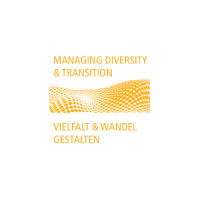Meng Yi: Research Stay Report: Exchange Program at California State University San Bernardino
From October to January, I had the privilege of participating in a three-month research
exchange at California State University San Bernardino under the guidance of Professor Jane
Chin Davidson. This exchange was part of the TRANS-ASIA Research Project, closely
aligned with my doctoral research on the representation of the body in contemporary Chinese
art. This report details the transformative experiences, achievements, and profound insights
gained during my stay, with the hope of inspiring fellow researchers and aspiring doctoral
students.
The interactions with my mentors were the most cherished aspects of this exchange.
Professor Jane Chin Davidson and other esteemed faculty members provided invaluable
academic resources and personal insights that reignited my passion for research. Before this
exchange, due to the outbreak of COVID-19 and geographical distance, I had limited
opportunities to meet with my second supervisor in person. However, these weekly meetings
were not merely about tracking progress; they were intellectual sanctuaries where I could
discuss challenges, receive tailored feedback, and explore new ideas. I was fortunate to
access many of the school's research resources and benefit from the support of its scholars.
My interactions with Professor Katherine Gray, the Dean of the Art Department, offered
profound insights into contemporary art practices and the pivotal role of academia in
fostering artistic innovation.
One of the highlights of my stay was the relationships I built with key figures in my field.
Conversations with these experts were more than academic exchanges; they were moments of
inspiration and intellectual synergy. Each interaction offered new insights and perspectives
that helped to shape and refine my research. I had the extraordinary opportunity to connect
with Professor Amelia Jones, a renowned expert in body studies. Our discussions delved deep
into the intersection of body politics and art, significantly enriching my research perspective.
Professor Jones's extensive knowledge and critical approach challenged me to think more
deeply about my own work. She encouraged me to explore new theoretical frameworks and
methodologies, which have since become integral to my research.
Additionally, living in the United States and experiencing its diverse and inclusive culture
was transformative. The environment in the U.S. is markedly different from Germany, being
more competitive and aggressive. It also differs from China, with a greater emphasis on
diversity. The vibrant cultural life in American cities expanded my personal and professional
horizons. It made me more adaptable and resilient, which is crucial for any researcher. More
importantly, it taught me to view art and culture from multiple perspectives, enriching my
research with a more holistic approach.
Traveling to Los Angeles, New York, and Seattle was an eye-opening experience. I conducted
in-depth interviews in these cities with curators, gallery directors, and artists, gaining
firsthand insights into their work and the broader art market. Visiting galleries and museums
felt like walking through a living textbook, where each piece of art told a story that textbooks
could never fully capture. The commercial art environment in New York, in particular, was a
revelation. Seeing the intersection of art and commerce firsthand and understanding how art
is marketed and valued in the United States was fascinating and instructive. These
experiences deepened my understanding of contemporary Chinese art in a global context and
inspired new ideas for my future research.
I drafted and refined several research articles during my stay, incorporating feedback from
peer review sessions and my mentors' guidance. Presenting my findings at seminars and
conferences was particularly rewarding, allowing me to share my work with a broader
academic audience and receive constructive feedback. I also developed a comprehensive
digital database of research materials, including academic papers, artworks, and interview
transcripts. This database will be a valuable resource for my ongoing and future research.
In conclusion, my three-month research exchange at California State University San
Bernardino was a transformative experience that significantly advanced my academic and
personal growth. I sincerely thank the Graduate School for funding this research exchange.
Their support was instrumental in making this transformative experience possible. I am
deeply grateful for this opportunity and look forward to applying the knowledge and skills
acquired during my stay to my future research endeavors. I highly recommend such exchange
programs to fellow doctoral students, as they offer unparalleled academic development and
personal enrichment opportunities.
